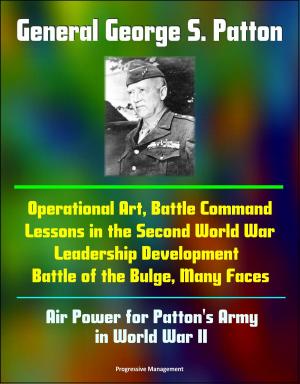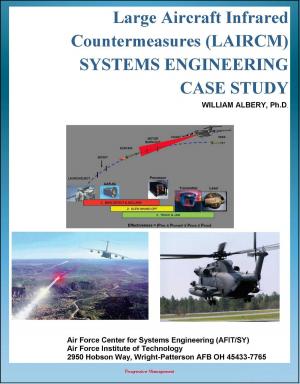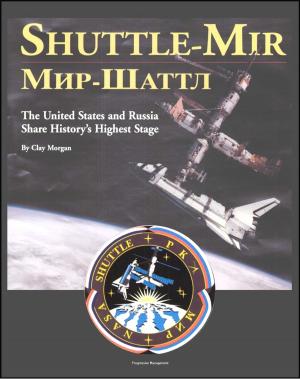Decisive Force: Strategic Bombing in the Gulf War - Desert Storm, Post-Vietnam Technology and Doctrine Changes, F-117A Stealth Fighter, E-3 AWACS, General Horner, Scud Missiles, Baghdad Attacks
Nonfiction, History, Middle East, Persian Gulf War, Military, Aviation| Author: | Progressive Management | ISBN: | 9781311351036 |
| Publisher: | Progressive Management | Publication: | June 30, 2015 |
| Imprint: | Smashwords Edition | Language: | English |
| Author: | Progressive Management |
| ISBN: | 9781311351036 |
| Publisher: | Progressive Management |
| Publication: | June 30, 2015 |
| Imprint: | Smashwords Edition |
| Language: | English |
Professionally converted for accurate flowing-text e-book format reproduction, this unique USAF publication outlines the role of strategic bombing in the 1991 Persian Gulf War. The U.S. Air Force (USAF) demonstrated that a new era in strategic bombing had begun. Air power could now destroy key portions of a country's military and economic infrastructure without resort to nuclear weapons and heavy bombers and with low losses to both the attacker and enemy civilians. This achievement rested on technology, which both increased bombing accuracy and decreased the effectiveness of enemy defenses, and the reexamination and reapplication of traditional strategic bombing theory by USAF planning officers. Alone of the world's air forces the USAF possessed a 2,000-pound bomb designed to penetrate many feet of hardened concrete and steel. Its use destroyed the most heavily protected and important Iraqi targets. American anti-radar missiles intimidated Iraqi radar operators, leaving middle and upper altitudes free for Coalition air operations. American stealth technology, in the form of the F-117A fighter gave the attacker virtual invulnerability while leaving the enemy defenseless. Behind this new technology lay the USAF planning officers, who laid out their offensive in a logical manner designed to minimize both friendly and enemy casualties while excising Iraq's military potential. The offensive, of course, did not achieve one hundred percent perfection, but it carried out its goals in a manner sure to make any future aggressor state hesitate to call such destruction down upon itself.
From January 17 to February 28, 1991, aircraft of the United States Air Force (USAF), United States Navy (USN), and United States Marine Corps (USMC), under the control of the United States Central Command (USCENTCOM) as well as contingents of the air forces of eleven other western European and Arab countries, all under the aegis of the United Nations (U.N.), systematically attacked and destroyed targets inside Iraq and Iraqi armed forces occupying Kuwait. The air attack was the international community's response to Iraq's occupation of Kuwait, a small oil-rich Kingdom at the western end of the Persian Gulf, on August 2, 1990, and its obdurate refusal to abandon its conquest. The air war against Iraq consisted of two separate campaigns distinguished by different sets of targets. In the campaign in the Kuwaiti Theater of Operations (KTO)/ Coalition air forces had three objectives; suppression of Iraqi air defenses in the KTO; preparation of the battlefield for a planned Coalition ground attack (by striking Iraqi ground forces and interdicting Iraqi supply lines), and support of Coalition ground force operations with tactical airlift and aerial firepower.
The second air campaign, the strategic bombardment of Iraq, struck at twelve sets of strategic targets. It sought to disrupt Iraq's air defense system, destroy its nuclear, biological and chemical weapons' research, production, and storage; demolish its offensive strategic weapon systems (short-range ballistic missiles [Scuds] and bombers); cripple its oil production and electrical industries; impair its war industry; and nullify its communications system. In addition, USAF planners hoped to "incapacitate" Saddam Hussein's regime. This objective had the readily apparent, but unstated, goal of creating a set of conditions within Iraq conducive to the overthrow of its political leadership. This work focuses on the use of strategic air power—on Coalition air operations devoted to the strategic bombardment of Iraq. It does not address directly the large-scale and deadly tactical air operations in the KTO, which consumed seventy-five percent of the total Coalition air effort.
Professionally converted for accurate flowing-text e-book format reproduction, this unique USAF publication outlines the role of strategic bombing in the 1991 Persian Gulf War. The U.S. Air Force (USAF) demonstrated that a new era in strategic bombing had begun. Air power could now destroy key portions of a country's military and economic infrastructure without resort to nuclear weapons and heavy bombers and with low losses to both the attacker and enemy civilians. This achievement rested on technology, which both increased bombing accuracy and decreased the effectiveness of enemy defenses, and the reexamination and reapplication of traditional strategic bombing theory by USAF planning officers. Alone of the world's air forces the USAF possessed a 2,000-pound bomb designed to penetrate many feet of hardened concrete and steel. Its use destroyed the most heavily protected and important Iraqi targets. American anti-radar missiles intimidated Iraqi radar operators, leaving middle and upper altitudes free for Coalition air operations. American stealth technology, in the form of the F-117A fighter gave the attacker virtual invulnerability while leaving the enemy defenseless. Behind this new technology lay the USAF planning officers, who laid out their offensive in a logical manner designed to minimize both friendly and enemy casualties while excising Iraq's military potential. The offensive, of course, did not achieve one hundred percent perfection, but it carried out its goals in a manner sure to make any future aggressor state hesitate to call such destruction down upon itself.
From January 17 to February 28, 1991, aircraft of the United States Air Force (USAF), United States Navy (USN), and United States Marine Corps (USMC), under the control of the United States Central Command (USCENTCOM) as well as contingents of the air forces of eleven other western European and Arab countries, all under the aegis of the United Nations (U.N.), systematically attacked and destroyed targets inside Iraq and Iraqi armed forces occupying Kuwait. The air attack was the international community's response to Iraq's occupation of Kuwait, a small oil-rich Kingdom at the western end of the Persian Gulf, on August 2, 1990, and its obdurate refusal to abandon its conquest. The air war against Iraq consisted of two separate campaigns distinguished by different sets of targets. In the campaign in the Kuwaiti Theater of Operations (KTO)/ Coalition air forces had three objectives; suppression of Iraqi air defenses in the KTO; preparation of the battlefield for a planned Coalition ground attack (by striking Iraqi ground forces and interdicting Iraqi supply lines), and support of Coalition ground force operations with tactical airlift and aerial firepower.
The second air campaign, the strategic bombardment of Iraq, struck at twelve sets of strategic targets. It sought to disrupt Iraq's air defense system, destroy its nuclear, biological and chemical weapons' research, production, and storage; demolish its offensive strategic weapon systems (short-range ballistic missiles [Scuds] and bombers); cripple its oil production and electrical industries; impair its war industry; and nullify its communications system. In addition, USAF planners hoped to "incapacitate" Saddam Hussein's regime. This objective had the readily apparent, but unstated, goal of creating a set of conditions within Iraq conducive to the overthrow of its political leadership. This work focuses on the use of strategic air power—on Coalition air operations devoted to the strategic bombardment of Iraq. It does not address directly the large-scale and deadly tactical air operations in the KTO, which consumed seventy-five percent of the total Coalition air effort.















